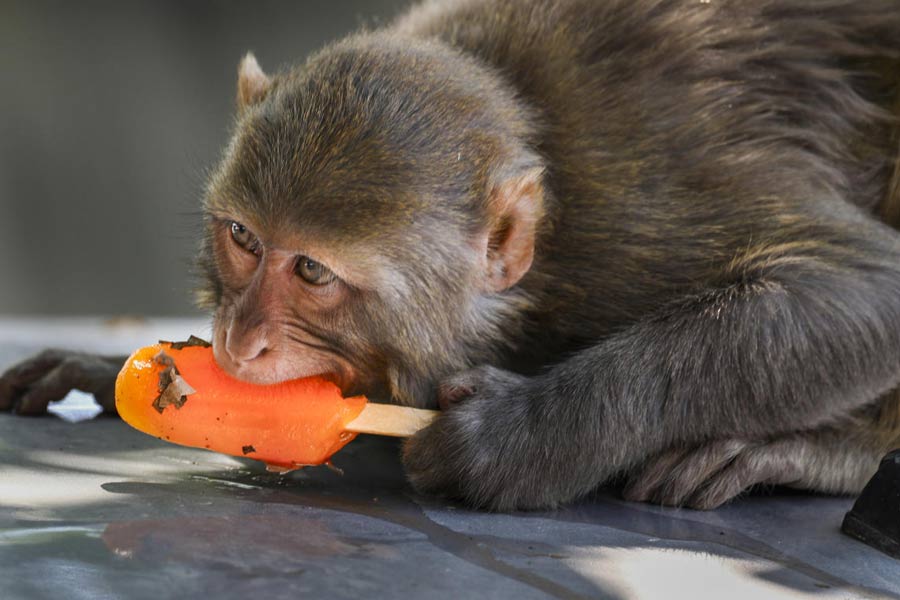
Angelina Jolie or Deepika Padukone? Naomi Campbell or Madhuri Dixit? Or, perhaps, you prefer Sonakshi Sinha? One would expect questions such as these in cine fan clubs - not in laboratories. But the eternal question - what's beauty - is being debated by scientists. Attractiveness, some believe, is not subjective but can actually be measured.
Biologists studying the evolution of human behaviour have always been perplexed by the relationship between the female body shape and attractiveness. But until a few decades ago, little attempt had been made by scientists to study it.
A new study, however, seems to have turned an old theory asunder. There is no one trait that defines beauty - and attractiveness is not just about the ratio between the hips and the waist, says Australian scientist Robert C. Brooks in a study published in March.
The hip-waist ratio theory came up over two decades ago. One of the first scientists to have zeroed in on this measure of the physical attractiveness of the female body was the late Devendra Singh, an evolutionary psychologist at the University of Texas at Austin, US.
In 1993, Singh, originally from Uttar Pradesh, established through a series of experiments that an hour glass figure - a 36-inch bust and hips, and 24-inch waist, or 36-24-36 - was the most alluring shape for a female body.
Singh, who died in 2010, demonstrated that women with waists that were 70 per cent of their hips were the most attractive. He further demonstrated that all winners of the Miss America contests between the 1920s and 1980s had a waist-to-hip ratio (WHR) that ranged from 0.72 and 0.69. He went through copies of Playboy to confirm that its pin-up girls too maintained a similar rate.
Don't for a moment think that scientists have been studying this just for pleasure: attractiveness is an important evolutionary factor. WHR is seen as an accurate and honest indicator of youth, health and fecundity, which are important determinants of female reproductive value.
Scientists say they study physical attractiveness because it influences many different aspects of human social interaction. For example, people preferentially mate with, date, employ and even vote for physically attractive individuals. People also tend to automatically ascribe positive personality characteristics to those with good looks.
Studies have also shown that the physical attractiveness of misbehaving children and individuals accused of burglary or fraud tempers others' perceptions of the seriousness of their action.
But given the importance of such studies, what role does an hour glass figure play in evolution? Brooks has his reservations. The evolutionary biologist at the University of New South Wales in Sydney, Australia, believes that the idea of an optimal ratio is so appealing in its simplicity that it became a staple factoid for many lifestyle magazines.
This was not without biological reason. Experimental and clinical studies have shown a link between the hour glass figure and hormonal and endocrinological mechanisms regulating reproductive potential, fertility and the risk of major diseases.

Another study demonstrates that broad hips are not just visually appealing (to many), but have a role to play in evolution too. A study by epidemiologist William D. Lassek at the University of Pittsburg and his collaborator Steven J. Gaulin, an anthropologist at the University of California at Santa Barbara, published a few years ago, showed that the fat which gets deposited in the hips, the buttocks and thighs of women, but much less in the waist, is a special omega-3 fat called DHA. DHA is very important for the brain development of babies while in the womb as well as in the early days of life.
This was further highlighted by Cambridge reproductive biologist David Bainbridge, whose recent book Curvology credits female bottoms for homo sapiens' superior intelligence.
But the new studies have also stirred up a controversy. Do these studies centre on Caucasian bodies? Sudhakar Krishnamurti, a sexual health expert and director of the Andromeda Andrology Center in Hyderabad, believes that the WHR is mostly a Caucasian concept of beauty, and, to some extent, Oriental.
"It doesn't apply to large parts of Central and South Asia and also Africa as people there are steatopygous (have fat or prominent buttocks)," he says.
That apart, the WHR concept doesn't tell the full story of female beauty, argues applied psychologist Martin Gruendl of Regensburg University in Germany. "Women are able to maintain a low WHR only for a brief period (late teens and early 20s) and this ratio gets distorted after they bear a few children. Are we saying they cease to be attractive beyond a certain age," he asks.

Attractiveness - male or female - is a subject that Gruendl, 39, has been studying for a while now. Through his continuing project, Beauty Check, he has been creating "beauties" who put the best-looking women in his country to shame. Except that his beauties are created using software.
Some years ago, Gruendl made participants in a study evaluate images of one such "creation" as well as that of top contestants of the Miss Germany pageant. The virtual beauty scored 6.2 on a scale of 7, while the woman who won the crown came a poor second with a 2.8!
In another interesting study published a couple of years ago in the journal Aesthetic Plastic Surgery, Gruendl and his colleagues showed that there was a difference between male and female perceptions of what they considered an attractive female body.
The online study, in which 34,000 men and women participated, showed that while 40 per cent of men liked a large bust, only 25 per cent of women wanted one. "The fact that women wanted smaller busts clearly indicates their altered role in Western industralised societies where they want to concentrate more on their career than on reproduction," Gruendl says.
Men's obsession with the female bust has been underlined by another study. Using a sophisticated eye-tracking technique, Barnaby J.W. Dixson, Brooks' colleague at the Australian University, found that men viewing photographs of women looked more often and for longer at the breasts or waists than the face or the lower parts of the body. The study was published in a 2011 issue of the journal Archives of Sexual Behavior.
Brooks too has been involved in studies that prove physical attractiveness goes much beyond WHR and body mass index - a trait many other researchers thought would explain body attractiveness more effectively.
Using similar but independently developed computer simulated female bodies, Brooks and his colleagues (including Dixson) have proved that there really is no single ideal body shape for women.
According to Brooks, studies in the past have focused strongly on the waist, hips and bust, but sexual selection operates on the "whole phenotype" - that is, the entire body structure.
Their experiment, carried out over a few years, saw computer generated female models "evolving" over a total of eight generations, improving their physical attractiveness. The first generation of 120 simulated models was overweight. After a few thousand people rated them for attractiveness, half of the models who received the least ranking were removed.
The rest "evolved" into the next generation with subtle changes in 24 different attributes - such as slenderness, bust size, waist, forearm, bicep, calf and thigh girth.
According to Brooks, 60,000 people from across the world participated in the study and evaluated the models. By the eighth generation, the models had longer arms and legs and were more slender. The fact that many models, rather than a single most attractive body type, survived generation after generation of selection, forced the scientists to infer that there is more than one way to make an attractive body.
"The liberating message for all of us is that evolutionary biology has more to offer our understanding of diversity than the idea that only one 'most attractive' body (or face, or personality) always wins out," Brooks says in a statement.
Of course, not all scientists agree. "A computer generated stimulus can never be comparable to a living person," feels Amit Abraham, head of psychology, St John's College, Agra. "Sexuality, sensuality and beauty go much beyond physical attributes," he says.
Experts in gender studies are not happy with such studies either. "Whether it's the film Dum Laga ke Haisha [about the problems faced by an overweight woman] or the 'curviness' of actress Sonakshi Sinha or Huma Qureshi, Indian popular culture seems to be grappling with the question of the ideal body type," says Bindu Menon Mannil, assistant professor, media and cultural studies, Lady Shri Ram College, New Delhi.
"Deeply entrenched in the biomedical discourse, I find the report is another way of justifying the discourse on ideal body type - slender, long-legged and with small waist - which is the opposite of most Indian women's bodies but nevertheless rendered as an aspiration by the advertisement industry and beauty industry," she says.
But the discussions on what makes a woman attractive are not going to die out. Anthony J. Lee, a psychology researcher at the University of Queensland, Australia, points out that other factors - such as intelligence - do help define looks. "[But] the physical attractiveness of women is one of the largest predictors in men's preferences," he says. And that, of course, is not exactly rocket science.











